On Tuesday, the Australian Bureau of Statistics (ABS) released dwelling approvals data for July, which showed 15,624 trend approvals for the month, down 1.0% from July.
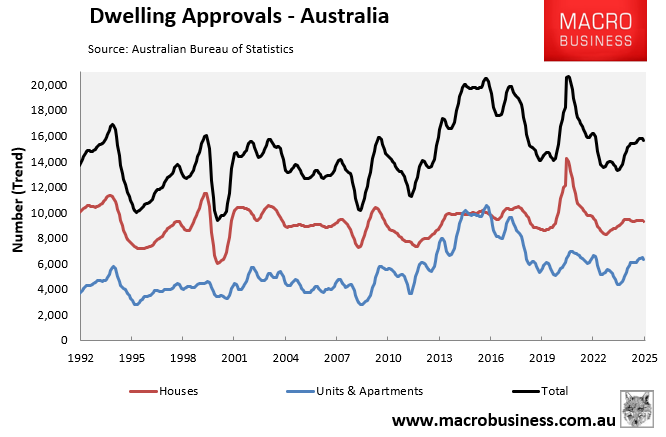
Approvals remained 4,376 (22%) behind the National Housing Accord’s five-year objective of 20,000 dwellings per month.
In the year to August, 189,105 dwellings were approved for construction, which was 50,895 (21%) fewer than the National Housing Accord’s target of 240,000 homes each year.
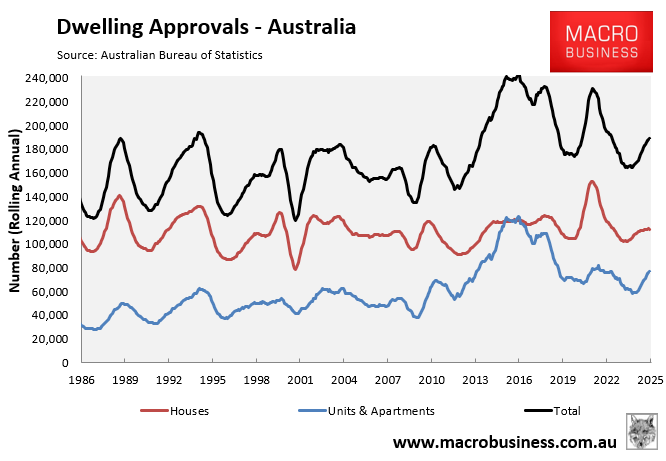
In the first 14 months of the National Housing Accord, 218,306 dwellings were approved, 61,694 (22%) fewer than the target of 280,000 dwellings.
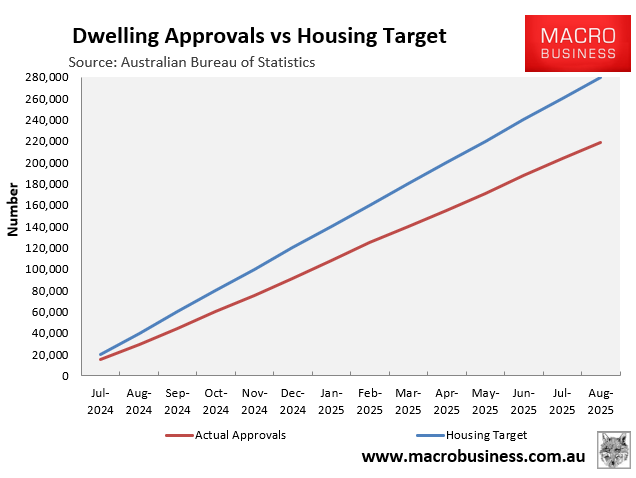
However, approval for a dwelling does not guarantee construction.
Over the past decade, dwelling approvals have outpaced completions by 5%. This means that the National Housing Accord’s target is further out of reach.
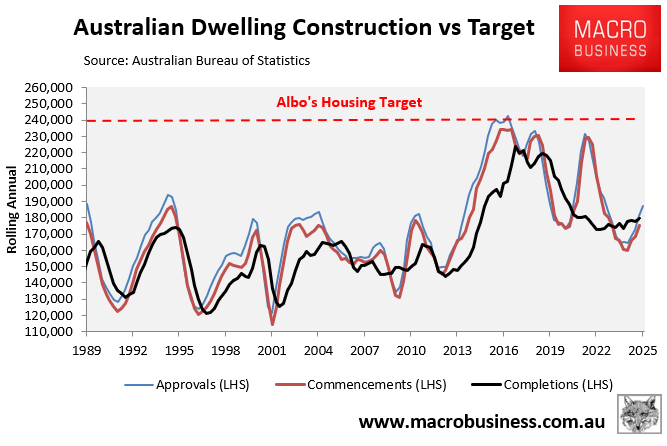
The impediments to increased housing supply are considerable, including factors such as:
- Interest rates are structurally higher.
- Construction expenses have risen by more than 40% since the pandemic.
- Residential lot values have risen by around 33% since the outbreak.
- Factors affecting the homebuilding industry include labour shortages due to government infrastructure projects and high rates of bankruptcy.
As a result, the National Housing Supply and Affordability Council (NHSAC) predicted that just 938,000 units will be completed nationwide over the five-year National Housing Accord term, 262,000 (22%) short of the 1.2 million target.
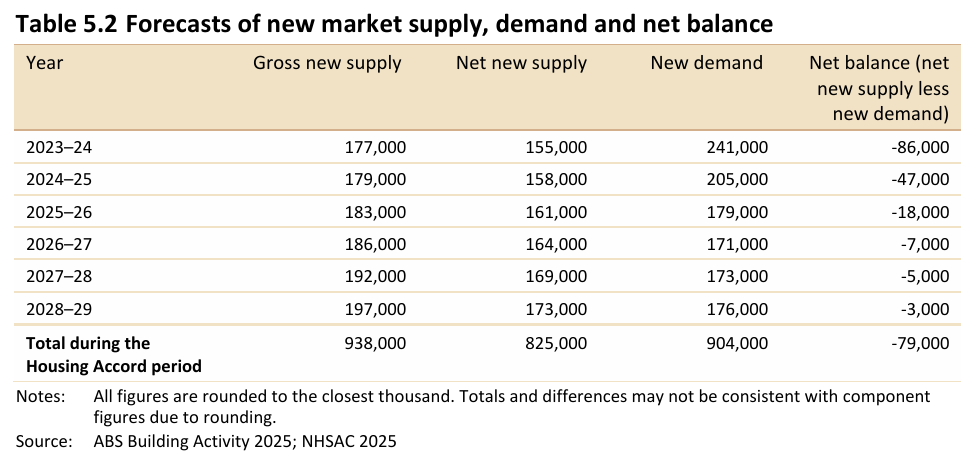
In turn, Australia’s cumulative housing shortage, currently estimated at between 200,000 and 300,000 homes, will rise by 79,000 over the five-year Housing Accord term.
The only genuine solution to Australia’s housing shortfall is to reduce demand by running a smaller and more targeted immigration system.
NHSAC’s sensitivity analysis forecast that if the nation’s population rose by just 15% less than forecast over the next five years, the projected 79,000 deficit would become a 40,000 surplus:
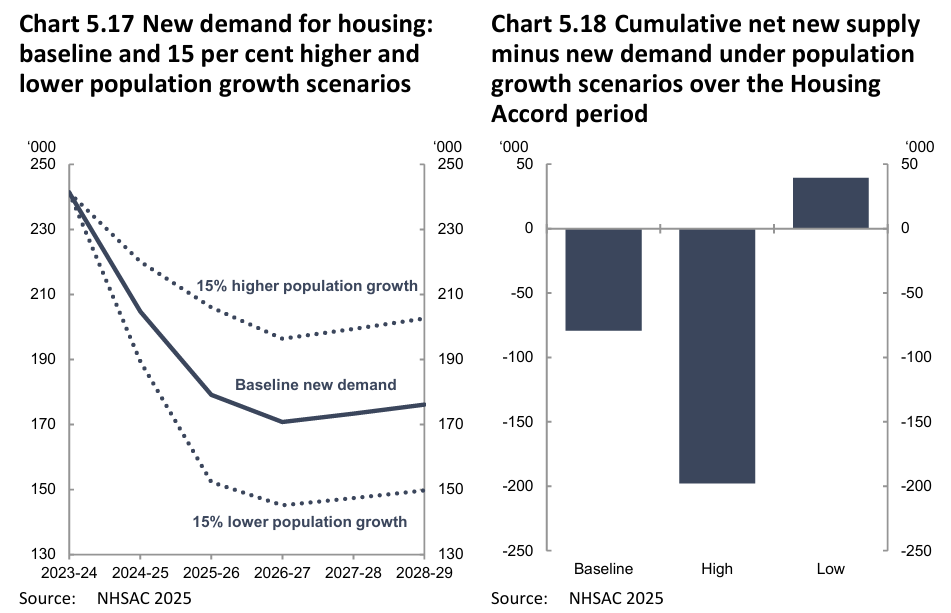
Australia is facing a persistent housing crisis because its population has expanded faster than almost any other advanced country this century.
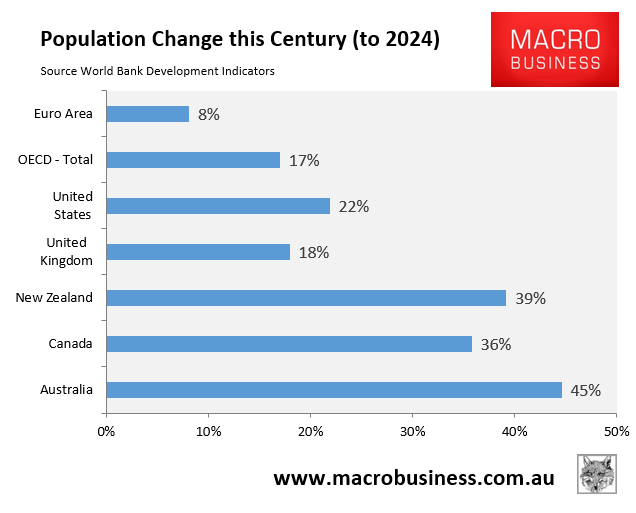
Thus, ensuring that population demand matches supply is critical to resolving the housing crisis. If this does not occur, the housing shortage and rental crisis will continue to worsen.

